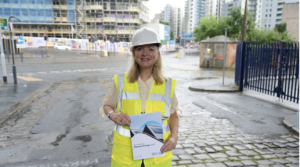Here’s what you need to know about the benefit cap:
- The cap breaks the link between what you need and what you get. People are assessed for social security support according to need, but if that help goes above the – arbitrary – level of the benefit cap, it is restricted. In other words, the needier you are, the more likely you’ll be hit by the cap.
- When the cap was originally set, the amount (£26,000) was based on the premise that non-working households shouldn’t receive more than the average earnings of working households. But this isn’t comparing like for like: it’s comparing incomes with earnings. A working family on £26,000 could also receive a range of benefits and tax credits.
- The new – lower – amount (£20,000, or £23,000 in London) does not have a rationale. And it has come in at a time when the cost of living is going up.
- One of the stated aims of the cap is to incentivise people to move into work. But only 17 per cent of people affected by the benefit cap are on Jobseeker’s Allowance – i.e. expected to be actively trying to get a job. The vast majority of people affected by the cap are not expected to work because of disability or ill-health, or because they have very young children.
- Ministers claim people capped are 41 per cent more likely to move into work. That sounds big, but actually the effect is relatively small. The government’s own evaluation showed about 16 per cent of people moved into work shortly after being capped and that 11 per cent of people would have moved into work anyway. That difference in rates (4.4 percentage points to be precise) is where the 41 per cent figure comes from. About 75 per cent of people move off JSA after 6 months, 90 per cent by 12 months.
- More than 116,000 families will be affected by this new cap – and more than 319,000 children. It’s not just larger families either. Most families affected by the lower cap have two or three children.
- The Supreme Court has said that the benefit cap breaches the UN Convention on the Rights of the Child, and that ‘it cannot possibly be in the best interests of the children affected by the cap to deprive them of the means to provide them with adequate food, clothing, warmth and housing, the basic necessities of life’.
- The only other way to become uncapped is to move house somewhere cheaper. Yet a family with two young children will not be able to find a cheap enough home in 60 per cent of the country to escape the cap – including the entire southeast and southwest regions.
Families with very young children and people with disabilities – who are most likely to be affected by the cap – ought to be given the strongest possible protection against the deprivation this policy leads to. That would be fair.
















